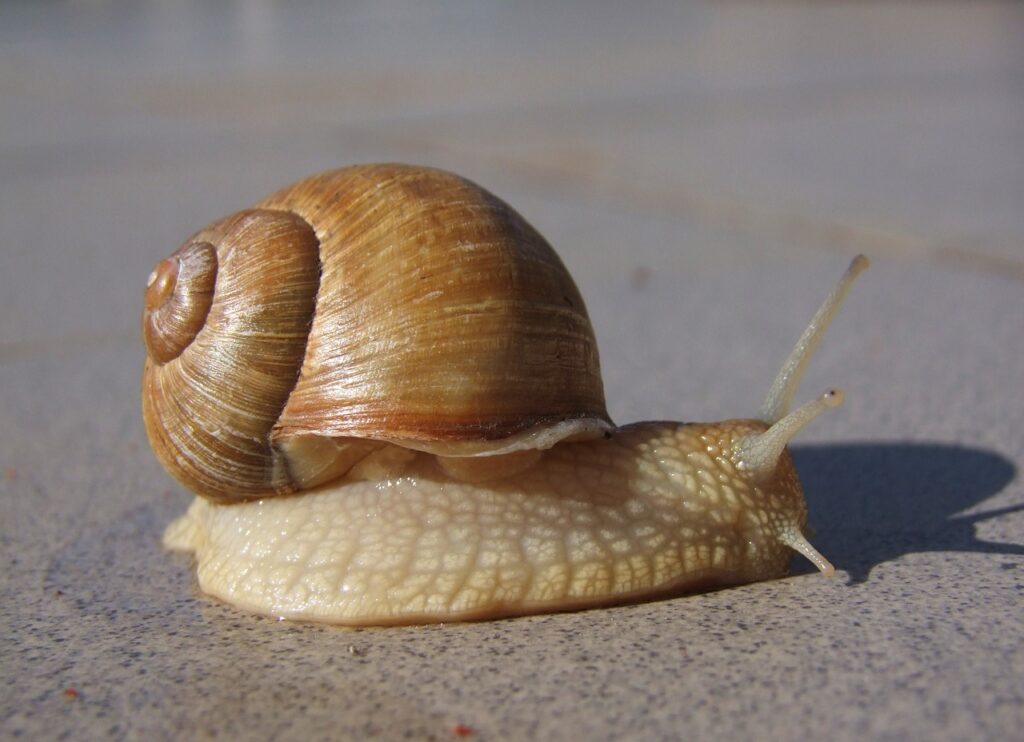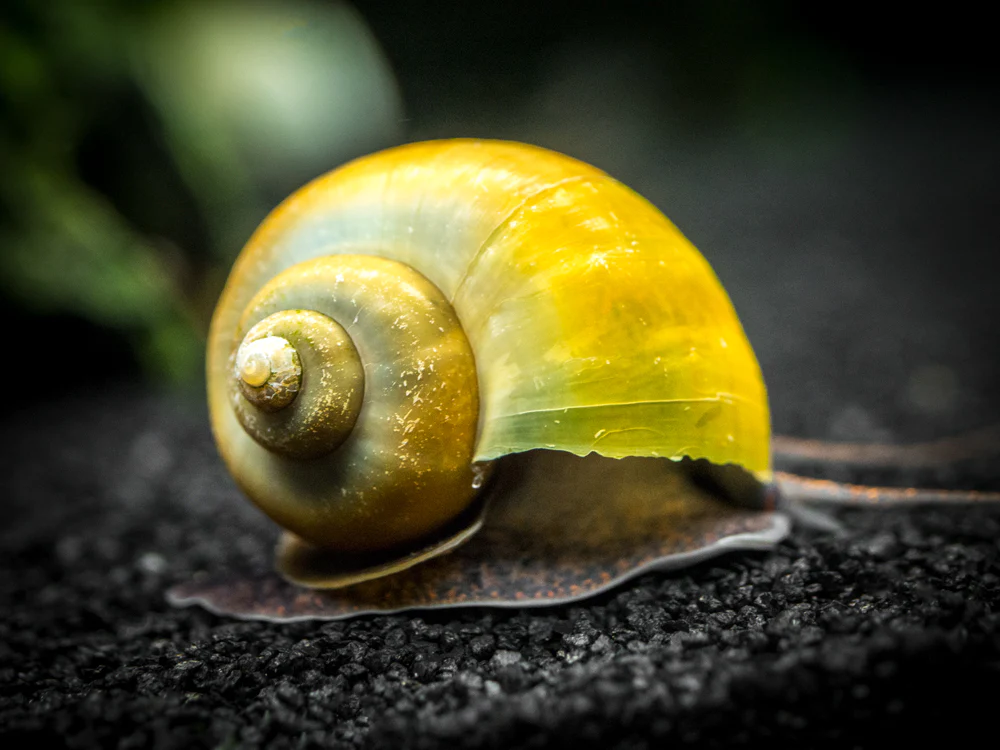Table of Contents
ToggleIntroduction
Breeding mystery snails can be a rewarding and fascinating endeavor for aquarium enthusiasts. Successfully breeding these unique aquatic creatures requires careful consideration of various factors, from selecting healthy adult snails and creating the right breeding environment to stimulating their mating behavior and providing appropriate care for eggs and hatchlings. How To Breed Mystery Snails?
Breeding these snails not only contributes to the hobby and the availability of these captivating creatures but also plays a role in conservation efforts for various mystery snail species.
Choosing Healthy Adult Mystery Snails
Ensuring mature and sexually active snails: The breeding process is starting; it’s essential to work with adult mystery snails that have reached sexual maturity. Typically, this occurs when they are at least six months old. Look for snails that exhibit signs of sexual activity, such as mating attempts or egg-laying behaviors. Healthy adult snails are more likely to reproduce successfully.
Identifying different mystery snail species: Mystery snails belong to various species with unique characteristics and preferences. Identifying the species you have is essential, as other species may have distinct breeding requirements and compatibility factors. Research and consult reliable sources or experts to determine your snails’ species accurately.
Pairing Compatible Snails

Recognizing Male And Female Snail Characteristics
Mystery snails are known for their sexual dimorphism, with males and females exhibiting distinctive physical features. Typically, males have a more pronounced aperture (opening) near their shell’s edge, while females have a rounder, more plump appearance. Understanding these differences is crucial for pairing compatible snails.
Once you’ve identified the gender of your snails, you can pair compatible individuals for breeding. Avoid housing multiple males together, as they may become aggressive. Instead, introduce a male and a female to encourage mating behavior. It’s important to monitor their interactions to ensure compatibility and minimize stress.
Selecting healthy and sexually mature mystery snails while paying attention to species differences and compatibility sets the stage for a successful breeding program. By making informed choices in this initial phase, you increase the likelihood of achieving successful breeding outcomes and witnessing the intriguing life cycle of these aquatic gastropods.
Tank Size And Water Parameters
Tank size: Select an aquarium or breeding tank of an appropriate size. A 10 to 20-gallon tank is often suitable for breeding a small group of mystery snails.
Water parameters: Maintain stable water conditions, including a neutral to slightly alkaline pH (around 7.5) and water hardness in the moderate to hard range. Ensuring stable water parameters is crucial to create a conducive breeding environment.
Substrate And Decorations
Substrate: Choose a soft and fine substrate like sand or smooth gravel to prevent injury to snail eggs. A substrate layer at the tank bottom provides a suitable surface for egg deposition.
Decorations: Include aquarium decorations such as rocks, caves, or plants to provide hiding spots for snails and encourage natural behaviors. These decorations also serve as potential egg-laying sites.
Temperature, pH, And Hardness Requirements
Temperature: Maintain a water temperature of 75-82°F (24-28°C). Mystery snails are sensitive to temperature fluctuations, so providing a stable temperature is important.
pH level: Keep the pH of the water slightly alkaline, around 7.5. Avoid extreme pH levels, as they can stress snails and hinder breeding.
Water hardness: Mystery snails typically thrive in moderately hard water with calcium ions available for shell growth.
Maintaining water quality
- Filtration: Install a gentle filtration system to maintain water quality without creating strong currents, as mystery snails are not strong swimmers and may struggle in turbulent waters.
- Water changes: Regular water changes help maintain water quality and remove waste. Aim for partial water changes of around 10-20% weekly.
- Chlorine removal: Ensure the tank’s municipal water has been cleaned to remove chlorine from hurting snails.
Temperature And Photoperiod Manipulation
Simulating seasonal changes
Mystery snails are influenced by variations in temperature and sunshine duration throughout the year. Gradually adjust the breeding tank’s temperature and photoperiod (lighting) to simulate these conditions. For example:
- Gradually increase the temperature by a few degrees to mimic the approach of spring and warmer weather.
- Adjust the lighting duration to imitate the lengthening days of spring and early summer.
Triggering mating behavior
As temperature and lighting conditions change, mystery snails may respond by exhibiting mating behaviors. Look for signs such as snails extending their reproductive organs (siphons) and engaging in courtship activities, including circling and tapping.
Diet And Nutrition
Offering calcium-rich foods: Adequate calcium is crucial for mystery snails to build and maintain their shells, especially during egg-laying. Provide a diet rich in calcium sources, such as calcium-based snail food, crushed coral, cuttlebone, or blanched vegetables like kale. Calcium supplements can help ensure snails have access to this essential nutrient.
Supporting egg production: Ensure your snails are well-fed and receive a balanced diet to encourage egg-laying. Various foods, including algae wafers, sinking pellets, and fresh vegetables, can provide the necessary nutrients for egg production. Adequate nutrition supports egg development and the overall health of your breeding snails.
Stimulating breeding behavior in mystery snails requires patience and attention to environmental cues. You can trigger their natural mating instincts by gradually adjusting temperature and photoperiod to mimic seasonal changes.
Additionally, a diet rich in calcium and essential nutrients supports egg production and your snails’ well-being. With the right conditions and care, you can look forward to observing the fascinating reproductive behaviors of these aquatic gastropods in your breeding tank.
Recognizing Egg Clusters
Identifying egg masses
Mystery snails lay their eggs in distinctive gelatinous clusters above the waterline. These egg masses are often translucent and can vary in size depending on the species and individual snail. Identifying these clusters is a key step in the breeding process.
Proper placement of egg clusters
Mystery snails typically attach egg clusters to surfaces above the water, such as aquarium glass, decorations, or the tank’s hood. When you spot an egg mass, avoid disturbing or removing it, as this can damage the developing eggs. Ensure that the egg cluster remains above the waterline to prevent submersion, which can lead to egg suffocation.
Incubation Period And Care
Monitoring water conditions: During the incubation period, it’s essential to maintain stable water conditions in the breeding tank. Please monitor temperature, pH, and water hardness, ensuring they remain within the appropriate range. Tough water conditions are crucial for the health and development of the eggs.
Protecting eggs from predation: Mystery snail eggs are vulnerable to predation by other aquarium inhabitants, such as fish and some invertebrates. To protect the eggs, consider using a fine mesh or netting barrier around the egg cluster or placing them in a separate hatching container within the tank. It prevents potential predators from consuming the developing snail embryos.
During the incubation period, which typically lasts a few weeks, you can observe the gradual development of the snail embryos within the egg clusters. Handling the eggs carefully and providing a safe environment that minimizes predation risk is essential. As you watch the eggs transform into tiny snail hatchlings, you’ll witness the remarkable life cycle of these aquatic gastropods in your breeding tank.
Conclusion
Breeding mystery snails is a rewarding and educational experience for aquarium enthusiasts. Raising these fascinating aquatic gastropods requires careful planning, appropriate environmental conditions, and attentive care throughout the breeding process. Each of these steps contributes to the overall success of the breeding endeavor. Breeding mystery snails allows you to witness the remarkable life cycle of these creatures but also offers an opportunity to contribute to their conservation and preservation.







